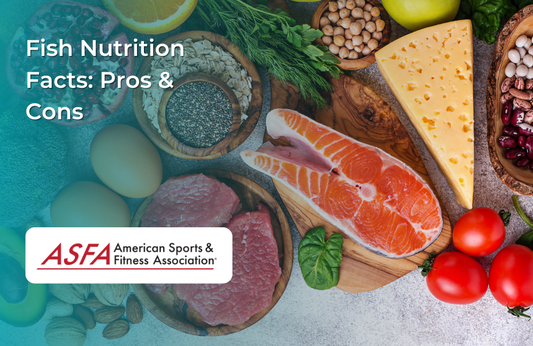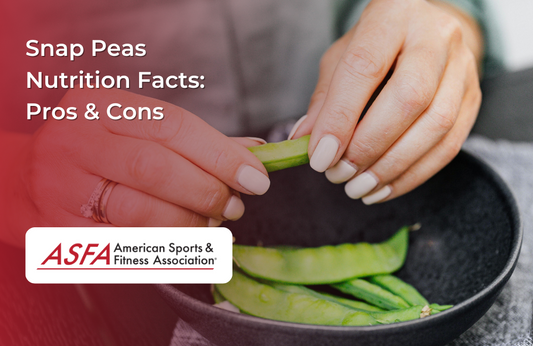Snap peas, also known as sugar snap peas, are a crunchy, sweet legume that can be eaten raw or cooked. They are nutrient-dense, providing essential vitamins, minerals, and fiber while being low in calories. However, they may not be suitable for everyone, especially those with digestive sensitivities.
Snap Peas Nutrition Facts Pros Cons: A Detailed Look at Their Nutritional Profile
One cup (about 150 grams) of raw snap peas provides significant nutritional value:
-
Calories: Around 60
-
Carbohydrates: 10 grams
-
Fiber: 4 grams
-
Protein: 4 grams
-
Fat: 0.5 grams
-
Sugar: 5 grams
-
Vitamins and Minerals:
-
Vitamin C: Supports immune function and skin health
-
Vitamin K: Essential for blood clotting and bone health
-
Folate: Supports cell growth and brain function
-
Potassium: Helps regulate blood pressure and muscle function
-
Iron: Supports oxygen transport in the blood
-
Antioxidants: Contains flavonoids and polyphenols that help reduce oxidative stress
Sugar snap peas nutrition also includes benefits like improved bone and eye health, and they are low in calories, making them a great addition to any diet.
What are Snap Peas?
Snap peas, also known as sugar snap peas, are a delightful hybrid between garden peas and snow peas. These vibrant green pods are plump, tender, and boast a sweet, crunchy flavor that sets them apart from other pea varieties. Unlike garden peas, where only the seeds are typically consumed, snap peas have edible pods that can be enjoyed whole. This makes them a versatile choice for snacking and cooking. Their higher sugar content compared to other peas gives them their distinctive sweet taste, making them a favorite among both children and adults.
Comparison with Snow Peas and Garden Peas
While snap peas, snow peas, and garden peas all belong to the pea family, they each have unique characteristics that make them suitable for different culinary uses. Green peas are highly nutritious, offering high fiber and protein content that supports healthy digestion and weight loss, and they are versatile in various recipes. Snow peas are known for their flat, tender pods and are often used in stir-fries and other Asian dishes due to their delicate texture. Garden peas, on the other hand, have larger, more fibrous pods that are usually shelled to extract the sweet, round peas inside. Snap peas stand out by combining the best of both worlds: they have the sweetness of garden peas and the satisfying crunch of snow peas. This unique combination makes snap peas a versatile ingredient that can be enjoyed in a variety of dishes.
Pros of Eating Snap Peas
Low in Calories and Supports Weight Management
-
Naturally low in calories and fat, making them a great snack for weight loss.
-
High fiber content promotes satiety, reducing overeating.
Rich in Fiber for Digestive Health
-
Supports gut health by promoting regular bowel movements due to its high dietary fiber content.
-
Acts as a prebiotic, feeding beneficial gut bacteria.
High in Vitamin C and Antioxidants
-
Boosts immune system function and helps fight inflammation.
-
Supports collagen production, promoting healthy skin and joints.
Good Source of Plant-Based Protein
-
4 grams of protein per cup, making it a great addition to vegetarian and vegan diets.
-
Helps support muscle repair and overall body function.
Proper cultivation of pea seeds is essential to ensure healthy growth, and different types of peas grown from these seeds offer various nutritional benefits.
May Help with Blood Sugar Control
-
Low glycemic index means snap peas do not cause blood sugar spikes.
-
Fiber slows down glucose absorption, beneficial for diabetics.
Supports Heart Health
-
Potassium and fiber help lower blood pressure and cholesterol levels.
-
Antioxidants reduce inflammation, supporting overall cardiovascular health.
Versatile and Easy to Include in Meals
Can be eaten raw, steamed, stir-fried, or added to salads and soups, there are many ways to eat sugar snap peas.
Naturally sweet flavor makes them a great snack alternative to processed foods. Sweet peas, with their mildly sweet flavor, are also versatile in the kitchen and can be used in a variety of recipes including salads, soups, and even desserts.
Cons of Eating Snap Peas
May Cause Digestive Issues
Eating peas, especially in large amounts, may cause bloating or gas due to their high fiber content.
Some people may experience mild stomach discomfort due to natural sugars like raffinose. To minimize digestive discomfort, it is important to consume fresh peas, as they retain their sweetness and flavor best when eaten shortly after harvest.
Contains Antinutrients
-
Snap peas contain phytic acid, which can reduce the absorption of minerals like iron and zinc.
-
Cooking snap peas reduces antinutrient levels, making minerals more bioavailable.
Potential Allergy Concerns
-
While rare, some individuals may be allergic to legumes, including snap peas.
-
Symptoms may include itching, swelling, or digestive discomfort.
Not as High in Protein as Other Legumes
-
While snap peas provide some protein, they are not as protein-dense as beans or lentils.
-
Best when paired with other protein sources for a balanced diet.
Preparation and Cooking Methods
Snap peas are incredibly versatile and can be prepared in a variety of ways to suit different tastes and recipes. Here are some popular methods:
-
Steaming: Steaming snap peas is an excellent way to preserve their nutrients and natural flavor. Simply place them in a steamer basket over boiling water and steam for 2-3 minutes until they are tender yet still crisp.
-
Sauteing: For a quick and easy preparation, sauteing snap peas is a great option. Heat some olive oil in a pan, add the snap peas, and cook for 2-3 minutes until they are tender but still have a bit of crunch.
-
Roasting: Roasting snap peas brings out their natural sweetness. Toss them with olive oil, salt, and pepper, and roast in the oven at 400°F (200°C) for 10-15 minutes until they are tender and slightly caramelized.
-
Stir-frying: Snap peas are a fantastic addition to stir-fries. Heat some oil in a wok or large skillet, add the snap peas, and stir-fry for 2-3 minutes until they are tender but still crisp. They pair well with a variety of vegetables and proteins.
-
Raw: Snap peas can also be enjoyed raw, making them a perfect addition to salads and other fresh dishes. Simply slice them thinly and add them to your favorite recipes for a sweet, crunchy texture.
Overall, snap peas are a delicious and nutritious addition to any meal. With their sweet flavor and crunchy texture, they’re sure to become a favorite in your household.
Conclusion
Snap peas are a low-calorie, high-fiber vegetable that provides essential vitamins, minerals, and antioxidants, offering numerous health benefits. They support digestion, heart health, and blood sugar regulation, making them a great addition to a balanced diet. However, some individuals may experience digestive discomfort due to fiber content, and their antinutrient levels may impact mineral absorption. Cooking or eating them in moderation helps maximize benefits while minimizing potential drawbacks.
FAQs
Are snap peas good for weight loss?
Yes, they are low in calories and high in fiber, making them a great weight-loss food.
Can you eat snap peas raw?
Yes, raw peas, including snap peas, can be eaten raw, steamed, or cooked, depending on preference.
Do snap peas cause bloating?
Some people may experience gas or bloating due to fiber and natural sugars like raffinose.
Are snap peas a good source of protein?
They contain some protein (4 grams per cup) but are not as high as beans or lentils.
Do snap peas raise blood sugar?
No, they have a low glycemic index, making them a good choice for blood sugar control.
Should I cook snap peas before eating?
Cooking reduces antinutrients like phytic acid, making minerals more absorbable. However, they are also safe to eat raw.
How do I store snap peas?
Store them in the refrigerator in a sealed container or plastic bag for up to 5 days for freshness.
Are snap peas healthier than regular peas?
Snap peas have less starch and fewer calories than regular peas but still provide fiber, protein, and vitamins. Both are healthy choices.





